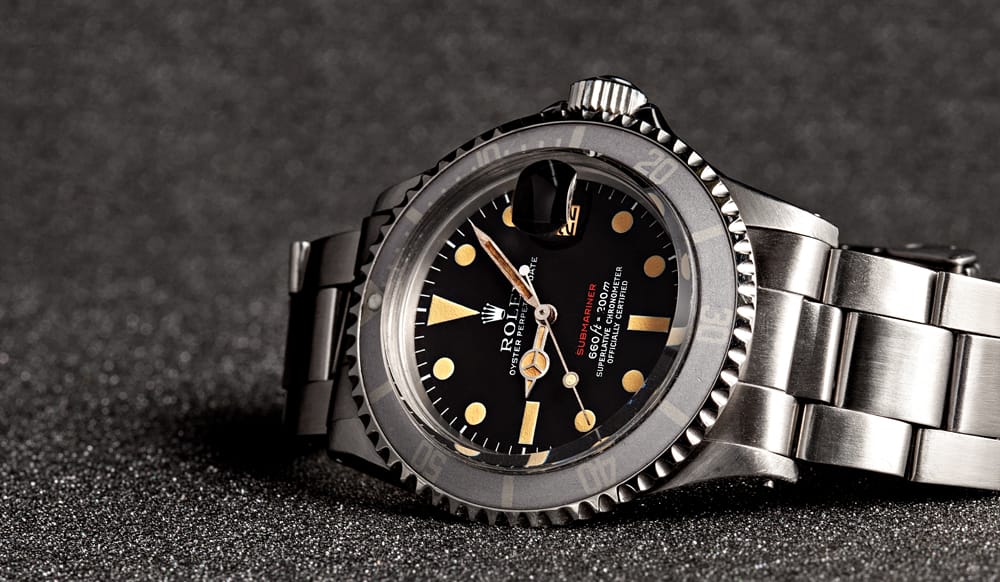Before answering how to know if a Rolex is original, let’s put ourselves in context. We live in an increasingly ‘connected’ world. Online shopping has gone from being something specific and rare in our day to day, to being something more than usual. We have lost the fear of buying online and every time we dare to buy more expensive things, objects that a few years ago we would not have even crossed our minds.
When placing an online order we cannot see or touch the specific object that we want to buy. When it comes to low-cost or everyday items, we don’t think twice. But what happens when buying something like a high-end watch, for example a Rolex watch?
Going to a jeweler / watchmaker that is an official Rolexdealer gives us a guarantee and confidence that is difficult to match when buying online. Logically before venturing to make a purchase of such value, you have to be well informed. Look at the opinion of other buyers, if it is a well-known website, if it is a website with official certificates of secure purchase / online trust, etc. This aspect is precisely one of the great reasons for the success of the Chrono 24 website, where all sellers have to meet certain requirements, there is insurance for transactions, protection for customers, etc.
Distributors like us, NordWatches, are always looking for ways to improve our services and add all possible guarantees so that our customers feel more secure and make things easier for them. For this reason, despite having our own online store, we are also Trusted Seller on Chrono 24,where we are the first trusted dealer in Spain.
Counterfeits and replicas
As clients, and more so with the times that go by with the replicas that arrive from Asian countries (it’s not just China anymore), we always have that doubt, that fear, what if they scam me?
Counterfeits have always existed in the world of high-end watchmaking and luxury watches. You don’t have to be a great expert to tell the difference between an original Rolex and a cheap copy. The first indicator will be the price. You won’t find a new Rolex that costs less than a few thousand euros. The ‘cheap’ copies do not usually exceed € 100 or € 200.
These counterfeits are easy to identify.
For example:
- Rolex does not manufacture watches with a glass case back with the movement exposed. Although there are some old limited special editions, they are very specific exceptions. If our Rolex is wearing it, we will know it is a fake.
- Most Rolex models have sapphire crystal. If the model we have purchased has a sapphire crystal, we can do the test of trying to scratch it. If it is scratched we know that it is false. Sapphire can only be grated by a diamond.
- If there is aluminum or plastics in any part of the watch we will know that it is false. Rolex does not work with these materials.
- The Rolex second hand moves smoothly, smoothly and constantly. If the second hand stumbles forward or in the typical ‘ticking’ movement, or if we hear the ‘ticking’ directly, we will know that it is a fake Rolex.
- Weight is another key factor. If our so-called Rolex is a lightweight watch, we will know that it is a fake. Rolex only works with heavy metals and crystals, so the result is always a watch that has a certain weight.
- The internal machinery. There are replicas that externally may seem authentic, but the movement of the watch, the caliber, is usually a cheap copy.
But today there are replicas so faithful that their cost amounts to over € 1,000. Here we are no longer talking about counterfeits, if not almost 100% replicas. They are not only made of the same metals and sapphire crystal, but they copy almost perfectly all the details and logos. With cheap fakes opening the watch does not fail. We will find a fake movement, many times it will not even be a mechanical watch. But these ‘professional’ replicas have even made copies of the movements, using the same materials and techniques, to the point that they are as precise as the original watch.
In these cases it is necessary to have the original version of the watch in hand to be able to compare each detail of the watch one by one to see the differences between the replica and the original. Using high-magnification magnifiers we will begin to see small details, such as that the letters or digits on the dial are not so fine and well finished in the replicas. But apart from these details, there is no way to differentiate the replica from the original, unless you are an expert.
You will find many videos on You Tube comparing an original Rolex to a ‘professional’ replica. At NordWatcheswe plan to acquire a replica of these in order to illustrate our article and show the differences, but we refuse to contribute to this counterfeit market and to allow a replica to enter our offices. The trust of our clients is something sacred to us.
In conclusion, how to know if our Rolex is original? Trusting serious distributors would be the first recommendation. But if after the recommendations and clues that we have given you, you still have doubts, take the watch for service to an official house, they will clear up your doubts.
You can follow us on social networks on Facebook, Instagram, Twitterand You tube


